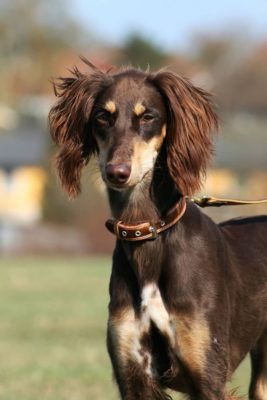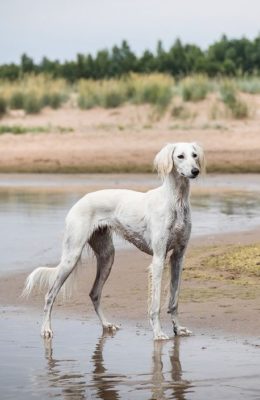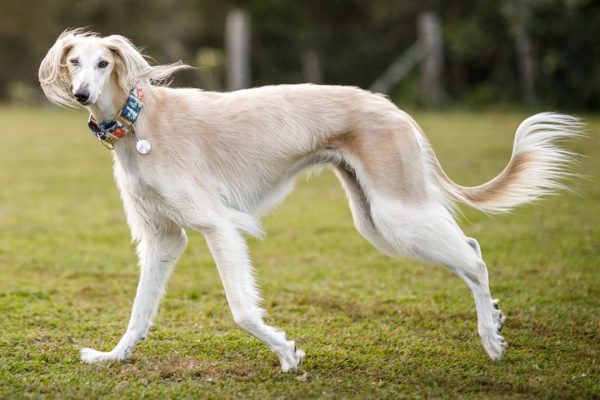Saluki
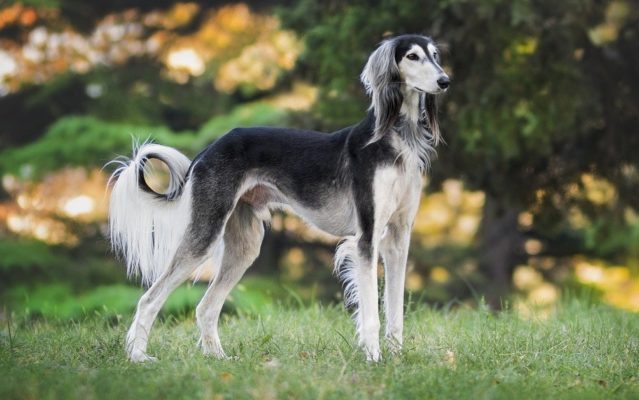
This puppy is a spunky hunter, but his temperament is surprisingly calm. He is affectionate but not very social. Nevertheless, he gets along well with other dogs. They are loyal, and therefore the perfect dog for one family. Consequently, when you get a Saluki, you get an aloof but loyal and faithful dog.
Table of Contents
Breed Information
| Another Name | Persian Greyhound |
| Origin | Fertile Crescent |
| Height | 58-71 cm |
| Weight | 18-27 kg |
| Fur | Long hair |
| Color | White, cream, pale, red, black and spotted |
| Lifespan | 12-14 years |
| FCI Classification | Sighthounds |
| Group | Dogs for kids, dogs for apartments, hunting dogs |
| Price | $400-1000 |
Breed Photos
Origin History
The Saluki is one of the oldest breeds of dogs. Experts tell us that Salukis may have existed as early as 7,000 B.C. Like other greyhounds, Salukis were special favorites of kings: Egyptian pharaohs, Alexander the Great, and many others. Today’s breed is remarkably similar in form and character to its ancient ancestors. We can still admire the same smooth lines and natural dignity that thrilled the Middle East, Egypt, and Asia’s royal families even before the pyramids were built.
Cross-breeding the Saluki with other breeds was strictly forbidden, a practice that allowed the Saluki to remain virtually unchanged for thousands of years. When Salukis came to England in the early 1900s, breed lovers made sure that the standard accounted for all breed variations. To this day, Salukis have several species, and they are all equally correct.
Appearance
Salukis are very graceful, elegant, and athletic-looking dogs with shiny coats and fine silky fleece on their ears and tails. Their heads are large, long, and narrow, which adds to their flexibility. Their noses are black and large. Their eyes are moderately large and nicely planted, dark in color. Their ears are medium-sized, fit against the dog’s cheeks, and are slightly pubescent.
They have a wide back, good level, rounded ribs, and a muscular, broad loin. The chest is deep and broad. Their hindquarters are wide, muscular, and powerful; dogs have a large amount of bone on their hindquarters and well-developed hips. The paws are compact and large, with well-folded toes. The Saluki tail is high pitched and long, and dogs carry it low when at rest but higher when moving or alert.
In terms of coat, Saluki can have a coarse or smooth coat. Dogs with coarse coats have a dense coat tighter around the neck, hips, and tail with beautiful plumage. Dogs with smooth coats have a much thicker coat that is more dog-like. A little bit of mulch on the legs, under the tail, and shoulders is allowed. Acceptable colors include cream, white, black, brown, tan, and red.
Character
This puppy is a spunky hunter, but his temperament is surprisingly calm. He is affectionate but not very social. Nevertheless, he gets along well with other dogs.
They are loyal, and therefore the perfect dog for one family. Consequently, when you get a Saluki, you get an aloof but loyal and faithful dog. They will tend to build a special relationship with a particular family member, and if that member leaves, they may suffer from separation anxiety. Therefore, this kind of person needs to be home regularly.
It is also worth noting that they are especially sensitive and understand emotions very well. Therefore, if there is a lot of discussion and fighting at home, they will develop anxiety and stress. They prefer silence and calmness.
Care
Salukis have two types of fur – fuzzy and smooth – and are easy to care for with weekly brushing, although if they have long fleece on their ears or tail, it may require a little more attention. Many Saluki owners use a leash to keep their ears from getting caught in a plate of food (smooth Salukis don’t have that problem). Salukis are very clean dogs, known for having no “doggy” smell. You should only bathe your pet if they get dirty or before a dog show.
Training
Salukis will benefit from three types of training:
(1) Crate training is recommended for those times when the dog needs to be safely locked up at home or while traveling.
(2) Basic obedience training will help your dog learn manners at home and in society. Well-mannered dogs are welcomed almost everywhere.
(3) For mental stimulation and exercise, dog sports such as coursing, flyball, and agility are interesting. Finally, if you start training early, you can teach Salukis to stay still for nail clipping and daily brushing.
Common Diseases
As a breed, Salukis do not have severe genetic diseases. Some may develop heart diseases, such as valve disease or arrhythmia. Certain cancers such as hemangiosarcoma or osteosarcoma, lymphoma, or breast cancer can also occur (the latter can be prevented with early spaying). Vigorous running and playing after meals can cause abdominal bloating or stomach congestion, which is life-threatening and requires immediate intervention. In general, however, Salukis lead healthy and active lives from birth to old age.
Nutrition
To keep Salukis healthy, dogs will need proper nutrition. Small puppies love dairy products but don’t mind eating meat. As the dog grows older, the diet becomes varied, so it has enough energy for exercise and walks. It is better to feed at a set time. The animal quickly gets used to the place of feeding, never scatters the food.
What to feed Saluki puppies if the babies are in a new home is not a difficult question. You will need to provide the puppies with the breeder’s diet. For complete information, ask how the breeder prefers to feed the adults. Remember, feeding the growing generation is recommended more than once a day, unlike adult dogs. Saluki dogs are unpretentious about food and love raw meat. The puppy’s diet, starting from two months, gradually introduced products: milk, eggs raw or boiled. Porridge, preferably in meat broth, grated vegetables, meat cut into small pieces.
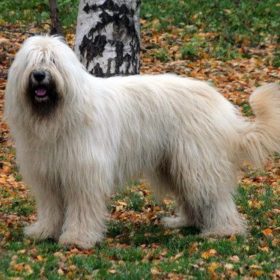 South Russian Ovcharka
South Russian Ovcharka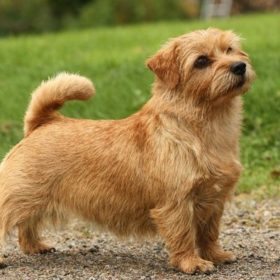 Norfolk Terrier
Norfolk Terrier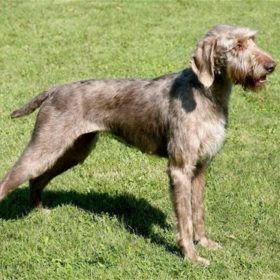 Slovak Rough-haired Pointer
Slovak Rough-haired Pointer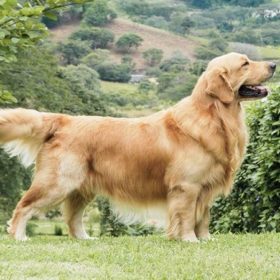 Golden Retriever
Golden Retriever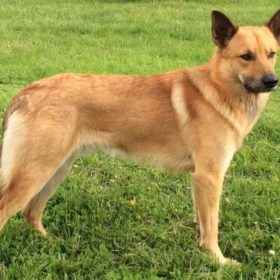 Chinook
Chinook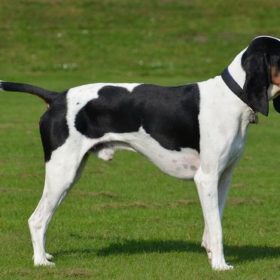 Bernese Hound
Bernese Hound